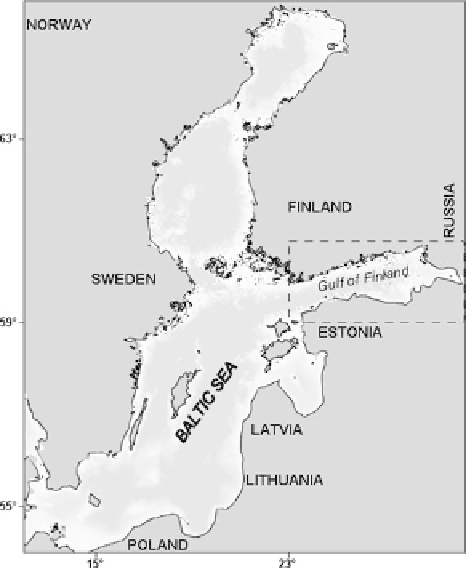Geoscience Reference
In-Depth Information
tide and the sea is partly ice-covered during the winter months. Eutrophication,
together with chemical pollution, over-fishing, alien species and global warming are
the major environmental problems threatening the Baltic Sea and its fragile ecosys-
tem. Eutrophication is a severe environmental problem especially in the Gulf of
Finland, which is a shallow brackish eastward extension of the main Baltic Sea,
with an average water depth of 35 m. The Gulf of Finland is badly stressed by the
population of almost 15 million people in its catchment area, the largest city being
St. Petersburg with more than 4.5 million inhabitants. As eutrophication is acceler-
ated by human activity, seasonal anoxia has turned into a more or less normal state
of the seafloor of the Gulf of Finland, which brings many problems into light.
17.2 Study Area and Characteristics of the Gulf of Finland
This study deals with the Gulf of Finland, which is an eastward extension of the
to other similar areas.
The area of the Gulf of Finland is slightly less than 30,000 km
2
and the average
east to a maximum of 8 PSU in the bottom waters of the western Gulf of Finland
Fig. 17.1
The Baltic Sea
with the Gulf of Finland
indicated

